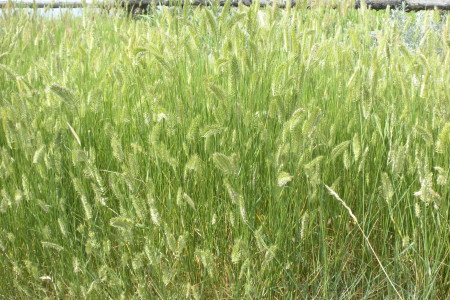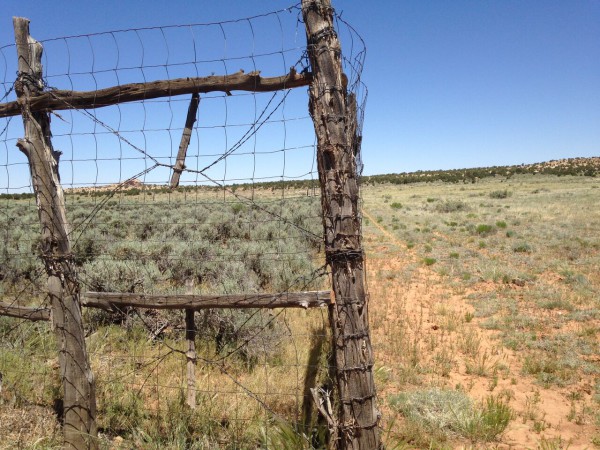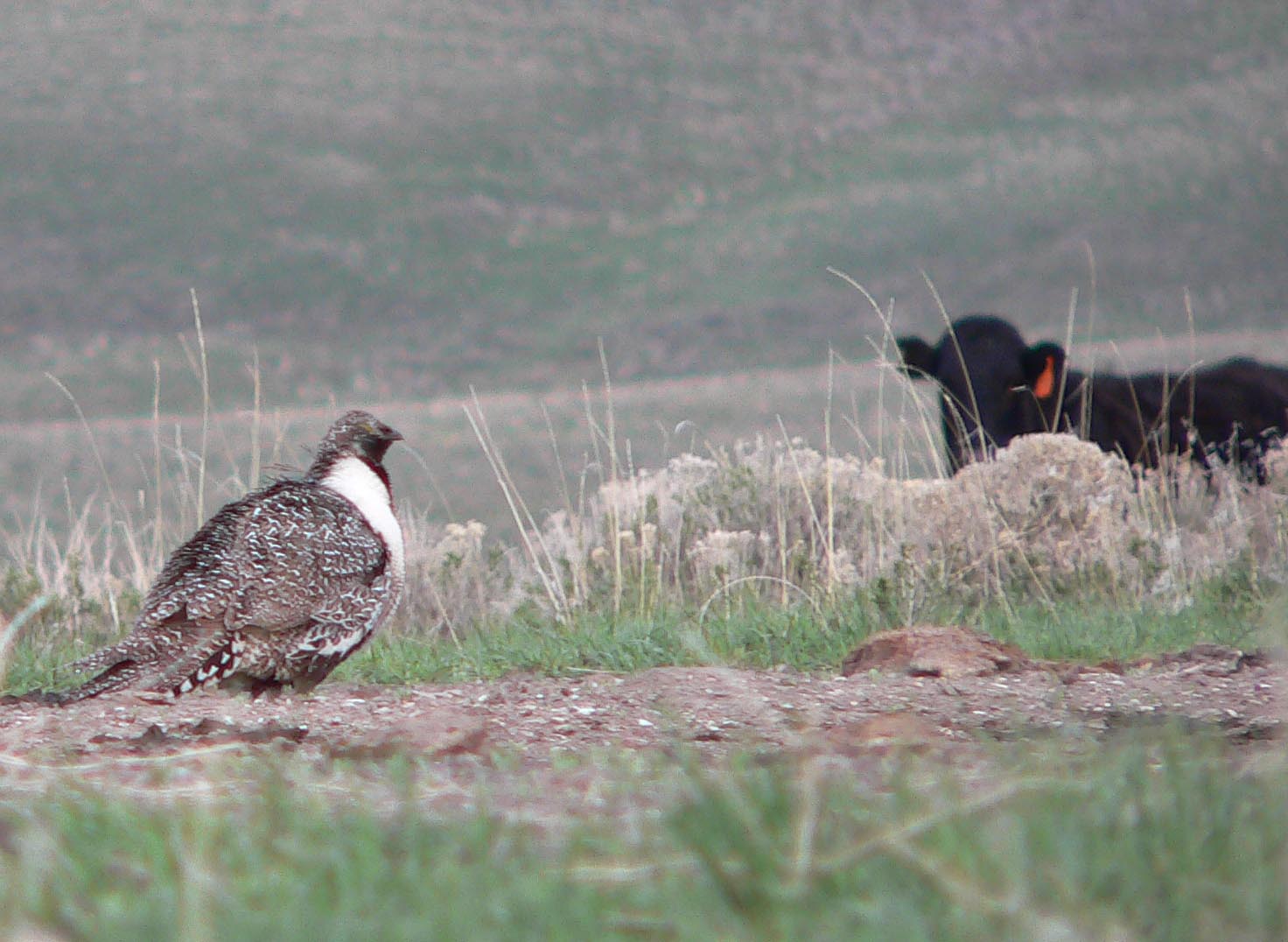Several years ago, livestock permittees in Rich County asked the Bureau of Land Management (BLM) to alter grazing practices on the Duck Creek Allotment. The BLM then conducted an environmental assessment and made a decision to move forward to implement the new grazing system. BLM’s Final Decision authorized a four-pasture deferred rotational grazing system, and range improvements for Duck Creek.
Once the decision was announced, Western Watersheds Project (WWP) and Wild Utah Project appealed the BLM’s Final Decision to the Department of Interior’s Office of Hearings and Appeals. A hearing was scheduled for June 8, 2009. The hearing was not concluded until July 28, 2011. The hearing transcript is 15,639 pages, making this the most lengthy and extensive Taylor Grazing Act case in the history of the Departmental Cases Hearings Division.
To successfully appeal a Final Decision, WWP had to show the Decision was arbitrary and capricious or by a preponderance of the evidence, that it was based on an error in methods, data, analysis, or conclusion. Further, WWP needed objective proof that the Decision was unlikely to improve upland and riparian areas or it failed comply with the Utah Rangeland Health Standards & Guidelines. Under administrative law, BLM can rely on the opinions of its own experts and that a “mere difference of opinion” is not enough to reverse a Decision made by BLM experts.
On May 16, 2013, Administrative Law Judge (ALJ) James Heffernan concluded that BLM did not follow proper procedure and did not take a “hard look” at the likely environmental impacts of the proposed action in its Final Decision for the Duck Creek Allotment. He held that since BLM “did not make a fully informed decision,” its Decision must be reversed and remanded it to the BLM for further analysis under the National Environmental Policy Act (NEPA). BLM appealed the ALJ’s decision to the Interior Board of Land Appeals (IBLA). Recently, the IBLA reversed the ALJ’s decision and affirmed the BLM’s Decision for the Duck Creek Allotment.
The BLM appealed the decision to the Interior Board of Land Appeals (IBLA). The IBLA reversed the ALJ’s decision and affirmed the BLM’s Decision for the Duck Creek Allotment. Overall, the IBLA found WWP did not have the evidence to support its claims and that they simply picked apart the Decision with alleged errors and disagreements.
Read the IBLA Duck Creek Decision
Questioning BLM’s Data
The ALJ found that BLM’s monitoring was extensive, but it paled by comparison to WWP’s detailed, extensive, scientific monitoring yearly from 2004 to 2008. He concluded that WWP’s data revealed the Duck Creek allotment as “seriously degraded,” and discounted BLM’s data which found the allotment was “in good condition.”
The IBLA found in many cases, the ALJ gave no deference (benefit of the doubt) to BLM’s experts, the data they compiled, and the decision made based on their data as the law requires. The IBLA concluded that WWP introduced no evidence to show how additional data would have altered BLM’s Decision. WWP did not perform an Upland Rangeland Health Assessment or a Riparian Proper Functioning Condition Assessment as BLM did. The ALJ failed to recognize the depth and value of the evidence provide by BLM, especially compared to that of WWP.
BLM’s Methodology for Data Collection
The ALJ took issue with BLM’s ocular method to estimate forage utilization. He found it unreliable because it was based on the subjective judgment of BLM employees, whereas the clip-and-weigh method used by WWP was objective and quantitatively determined utilization. The IBLA found that WWP accomplished little more than question the ocular method from a theoretical standpoint, WWP offered no proof that the BLM’s estimated of utilization were inaccurate.
Heffernan also found that BLM’s methodology was prone to error because it focused on key forage species rather than the using the all forage species method as WWP did. However, BLM was required to use the key forage species for monitoring rangelands according to the Randolph Management Framework Plan. Furthermore, the key forage species method focuses on those plants most likely to be grazed and will most accurately reflect the true utilization of forage.
Experts
According to the ALJ, Jim Catlin, Wild Utah Project, and John Carter, WWP, provided expert testimony because they have several years of on-the-ground, training conducting their “extensive” monitoring on the Duck Creek Allotment. In addition, Catlin and Carter knew more about Duck Creek than BLM because they spent more time on the allotment than any of BLM’s witnesses, 18 and 21 days, respectively.
The IBLA found neither Carter nor Catlin possessed the credentials to qualify them as experts in Rangeland Management or Wildlife Biology. When it comes to the amount of time BLM spent on Duck Creek, in 2005 a BLM inter-disciplinary team of 11 rangeland management and other resource specialists spent a month evaluating the Duck Creek Allotment. Tyler Staggs, BLM’s Range Management Specialist for Duck Creek, estimated he was on the allotment close to 300 days from 2004 to 2010. Robert Stager, Former State Range Management Specialist for Utah, estimated that he was on Duck creek 60 to 65 days in 2005-2007 and 2010.
Integrating WWP’s Data with BLM’s
The ALJ reported that BLM rejected all of WWP’s monitoring data and that constituted reversible error. However, BLM was not required by the Taylor Grazing Act, NEPA, or any other authority to incorporate WWP monitoring data into BLM’s decision-making process. BLM was in no position to assess the accuracy and reliability of WWP’s monitoring data because: (1) BLM was not present when WWP collected the data; (2) WWP failed to provide detailed information on the location of their monitoring site and other aspects of its monitoring program; (3) BLM could not determine, years later, that WWP’s monitoring data was accurate; (4) BLM is entitled to rely entirely on its own monitoring data collected by its own experts or under their supervision. BLM conducted its own analysis of WWP’s data and concluded it was unreliable.
The Paired Plot Method use by WWP to assess utilization was a modification of a method from Utilization Studies and Residual Measurements Interagency Technical Reference. The modification was devised by Catlin and Carter. WWP failed to justify its decision to depart from the standard method. It was never scrutinized by the scientific community. When collecting data, WWP clipped plant species from a half inch to one inch above the ground, which undermined the reliability of its utilization measurements. Other problems with WWP’s monitoring included selection of monitoring sites and an insufficient sample size.
Scoping Meeting and Due Process
The ALJ accused BLM of doing whatever was proposed by permittees and Coordinated Resource Management Group (CRM). But the IBLA found the Environmental Assessment (EA) reflects BLM’s independent determination. They rejected the idea that BLM’s NEPA review and decision-making were biased in favor of the CRM or permittees.
The ALJ found that BLM’s public scoping meeting failed meet scoping requirements and that the scoping meeting violated WWP’s rights to due process. According to the IBLA, BLM was not required to engage in any scoping when preparing its EA and that BLM merely attended the CRM meeting, but was not responsible for it. The IBLA stated: “Put simply, these were not BLM meetings in any shape or form.”
The IBLA went on to say that WWP was not excluded from providing its views to BLM on the Final Decision. WWP was given plenty of opportunity to offer its views and “contrary interests” regarding proper grazing of Duck Creek. Even though the Final EA was similar to the Draft EA, that didn’t mean that WWP’s comments were not fully considered by BLM. The IBLA fail to find reversible error in BLM’s NEPA review process.
Impacts of Grazing on Sage-grouse
The ALJ repeatedly pointed out that BLM did not know the location of sage-grouse nesting and brood-rearing areas and that the number of leks and sage-grouse habitat had declined on Duck Creek. The IBLA found that BLM’s Wildlife Biologists did know where the sage-grouse nesting and brood-rearing areas were and assessed the likely impacts of grazing on those areas. The IBLA found nothing in any law, rule, precedent, or policy requiring BLM to disclose those locations in its EA, since it could put them at risk of human interference. The IBLA found nothing in the record to support Heffernan’s view that the number of leks or habitat conditions had declined. Heffernan contradicted himself when he stated that the Connelly Guidelines regarding sage-grouse were not binding on BLM, but then found that BLM should have addressed whether the nesting and brood-rearing areas provided suitable habitat under Connelly’s Guidelines. Neither he nor WWP took into account the vegetation treatments on 2,000 acres of private lands on the allotment undertaken in 2003 and 2004 for the benefit of the sage-grouse.
The Utah Division of Wildlife Resources reported that Rich County is “one of two areas in the State of Utah that continues to produce increasing levels of sage grouse” and that “data from 2008 indicated a historical high in sage grouse numbers for Rich County.” From 2004 to 2007, the sage-grouse population on Duck Creek and elsewhere in Rich County doubled.
New Water Troughs
The ALJ faulted BLM for failing to consider the likely impacts associated with placing new water troughs in the uplands of the allotment. BLM presented evidence showing the uplands surrounding the new troughs were currently underutilized and that increased grazing could be accommodated without exceeding BLM’s utilization objective. WWP offered nothing to substantiate its view that livestock would likely be drawn to uplands and congregate around the new troughs in such numbers to adversely affect forage. WWP and Heffernan never acknowledged that BLM will be monitoring grazing near the new troughs annually and if it determines use is too high, BLM will act to remedy the problem.
Number of Livestock grazing on Duck Creek
Heffernan accused BLM of not knowing how many cattle actually grazed Duck Creek because they relied on actual use reports submitted by permittees. The IBLA found Heffernan’s basis for questioning the accuracy of actual use reports “confusing and unconvincing.” BLM can rely on actual use reports from permittees because the Actual Grazing Use Report states: “I CERTIFY that this is a complete and accurate report of my grazing use.”
Based on two aerial livestock counts Catlin testified that fewer cattle grazed Duck Creek than the permittees reported. Catlin flew over the Duck Creek once during the summers of 2006 and 2008, He counted 450 in 2006 and 304 in 2008 cattle, which differed from the actual use reports for 2006 (538 cattle) and 2008 (641 cattle). Heffernan found these reports had merit. The IBLA questioned the accuracy of Catlin’s aerial counts including: (1) Catlin lacked training and experience in aerial counts, and relied on inaccurate Duck Creek maps; (2) The plane flew 90 mph 500 to 1,000 feet above the ground; (3) Flight time over the 22,731-acre allotment was less than 30 minutes; (4) Duck Creek contains many areas that likely concealed hundreds of cattle; and (5) Catlin admitted he may have missed cattle. The IBLA found that all WWP established was that on two days Catlin counted livestock in numbers that differed from the numbers reported by permittees.





